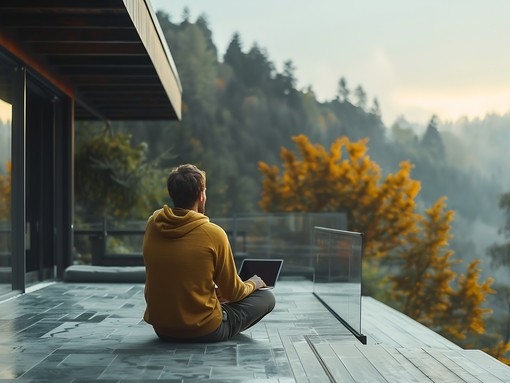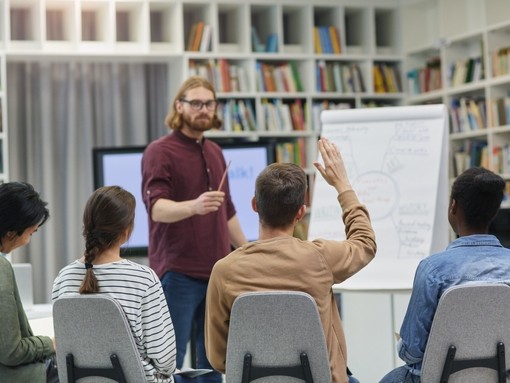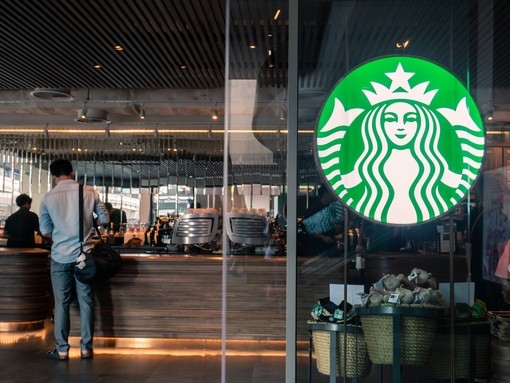
Creativity isn’t just for creatives: How to unleash your creative potential
Contents
- Welcome to the machine?
- Creativity improves feelings of satisfaction hence boosts retention
- Creativity is great for teamwork
- Creativity is great for problem-solving
- How to inspire creativity in yourself
- Change your routine
- Offer to do something out of your comfort zone
- Learn a new skill
- What employers can do to inspire creativity
- Diversity of people breeds diversity of thought
- Empower people with emotionally intelligent leadership
- Construct your office space to promote collaboration
Contents
When you think of the most creative team in the workplace, is the first one you think of in finance, or facilities management?
The answer is almost certainly no. When most people think of a creative team in the workplace, they usually gravitate towards designers, content creators, marketeers, engineers, software developers - teams at the sharp end of product creation or design.
The trouble is, this really isn’t true. Or at least, it shouldn’t be.

Welcome to the machine?
Everyone is born creative. As children, we experience probably the most creative time in our lives as we explore and learn about the world around us, unfettered by a lack of confidence in our creations or methods. We are free to let our minds wander and our creativity sparkle.
Creativity can suffer as we get older, particularly as we enter the world of work. If a role is repetitive or transactional and measured purely on how many of said tasks are completed in a day, it can become stifling to creativity. It’s easy to think that there is no room for creative thinking in such a role, either because it won’t benefit the process or, even if it does, it won’t be heard by managers. Ultimately, this feeling of just being a cog in the machine isn’t conducive to feelings of accomplishment or satisfaction.
In Creative Confidence: Unleashing The Creative Potential Within Us All, authors Tom Kelley and David Kelley speak about the importance of challenging this perception, whatever the role:
“It turns out that creativity isn’t some rare gift to be enjoyed by the lucky few—it’s a natural part of human thinking and behaviour. In too many of us it gets blocked. But it can be unblocked. And unblocking that creative spark can have far-reaching implications for yourself, your organisation, and your community.”
Ultimately, creativity is a mindset. It’s not just writing a novel or drawing a picture. Creativity can be about pulling together processes and resources in a new way to provide a solution that works in a new way. This works for any industry, in any role:
“You don’t have to switch careers or move to Silicon Valley to change your mindset. You don’t have to become a design consultant or quit your job. The world needs more creative policy makers, office managers. Whatever your profession, when you approach it with creativity, you’ll come up with new and better solutions and more successes. Creative confidence can inspire whatever work you already do - because you gain a new tool to enhance your problem-solving practices without having to abandon any of your existing techniques.”
Consequently, being creative in the workplace has a multitude of benefits for both employer and employee. Here are 3 ways employees benefit from being allowed to creatively shine:
Creativity improves feelings of satisfaction hence boosts retention
Rather than feeling like the cog in the machine, being allowed to apply creative thinking in the workplace makes work feel like it matters more. It becomes personal to employees because they feel as though they have been able to leave their own mark on it, rather than just complete a series of transactional tasks at the direction of their manager, who has all the control.
Increases in job satisfaction leads to improved employee retention rates in businesses. An engaged workforce is a much more stable workforce.
Creativity is great for teamwork
Creativity encourages collaboration between teams. If one person comes up with a creative way of improving process throughout the business, this in turn will engage others to be part of the idea, often improving it along the way.
Creativity is great for problem-solving
One of the greatest inhibitors to innovation is complacency. Looking at an issue in a fresh or creative way can be crucial in problem solving and getting past issues that until now have been a hinderance. In these situations, it’s important to start the process with the notion that no idea is a bad idea, no matter how radical it may seem. Creative problem solving uses both divergent and convergent thinking. Divergence generates ideas in response to a problem, while convergence narrows them down to a shortlist. It balances these two practices and turns ideas into solutions.
Since a lot of creativity can be linked to teamwork, bringing in fresh perspective and ideas can also help crack a problem in a short time.

How to inspire creativity in yourself
Change your routine
Nothing stifles creativity quite like stagnation. Repetitive daily routines, both in and out of work, can be a part of this, particularly if you’ve been in a role for a long time.
Everything from your pre-work morning ritual to the desk you sit at is an avenue for potential positive change. For example, why not make the morning commute more interesting by listening to an educational podcast? When you arrive at work, why not go and strike up a conversation with someone you don’t usually engage with? Has your desk looked the same for a long time? Having a blitz tidy or rearrangement of your working area can do a lot to foster a feeling of freshness, creating a positive physical surrounding that can be reflected in a subconscious change in mental state to be more open-minded and, ultimately, creative.
Offer to do something out of your comfort zone
We’ve seen how changes to your routine can work wonders for your creativity, but why not try something completely out of your comfort zone? You may surprise yourself by how much it inspires creativity. Consider, for example, becoming a guest contributor to your company’s internal or external news outlet. Make yourself available to join different groups in the workplace such as for mentoring or charity work.
Learn a new skill
Tied in loosely with doing something out of your comfort zone, consider learning an entirely new skill. It doesn’t have to be work-related either. Even something like learning a musical instrument can help rewire your brain to think in a different way and unlock the creativity within.
What employers can do to inspire creativity
Diversity of people breeds diversity of thought
Diverse management has been shown to increase revenue by 19%, according to The State of DEI in Tech 2022 report by Builtin. But diversity is about more than simply the financial benefits; it creates a better, more creative workplace for the entire business, effecting everything from morale to retention rates. Diverse teams bring with them a diversity of lived experiences, something that is crucial for creative, dynamic teams. Having 15 of the same person in a team is unlikely to stimulate radical or innovative change.
Empower people with emotionally intelligent leadership
A study by the Yale Center for Emotional Intelligence showed that how employees perceive their manager can influence creativity and innovation in their work. Managers and leaders who display traits of emotional intelligence help to foster creativity in the workplace as they provide more opportunities to grow and learn.
Tom and David Kelley elaborate:
“Psychologist and Stanford Professor Albert Bandura shows that our belief systems affect our actions, goals and perception. Individuals who come to believe that they can effect change are more likely to accomplish what they set out to do. People with this self-efficacy set their sights higher, try harder, persevere longer and show more resilience in the face of failure.”
With that in mind, it’s important for managers to remember the old adage that 8+1=9, but so too does 5+4. Just because you have an established way of doing things, it doesn’t mean that it’s the only way to get to that end goal. Let teams be creative, leave their own mark, and show you that there is a better way. Don’t tell them it’s your way or the highway, because if you dominate your teams with an attitude of ‘I know best’, you’ll shatter any and all creative confidence in these people. Let people do the job they’ve been employed to do and let them be creative.
Construct your office space to promote collaboration
It may sound obvious, but how an office is laid out can have a big effect on how people work within it. Having row upon row of cubicles is unlikely to inspire creativity or collaborative among employees, as the physical restrictions of this space make conversation difficult. The most creative ideas come from less formal conversations,
Make sure, where possible, there are plenty of places for people to break out, meet and collaborate. This could be seating areas with comfortable sofas or booths or a tea and coffee break area.
We’re all creative inside, but what skills make for good leaders? Find out how compassion and humour are two key skills that can make leaders excel
Contents
- Welcome to the machine?
- Creativity improves feelings of satisfaction hence boosts retention
- Creativity is great for teamwork
- Creativity is great for problem-solving
- How to inspire creativity in yourself
- Change your routine
- Offer to do something out of your comfort zone
- Learn a new skill
- What employers can do to inspire creativity
- Diversity of people breeds diversity of thought
- Empower people with emotionally intelligent leadership
- Construct your office space to promote collaboration
















